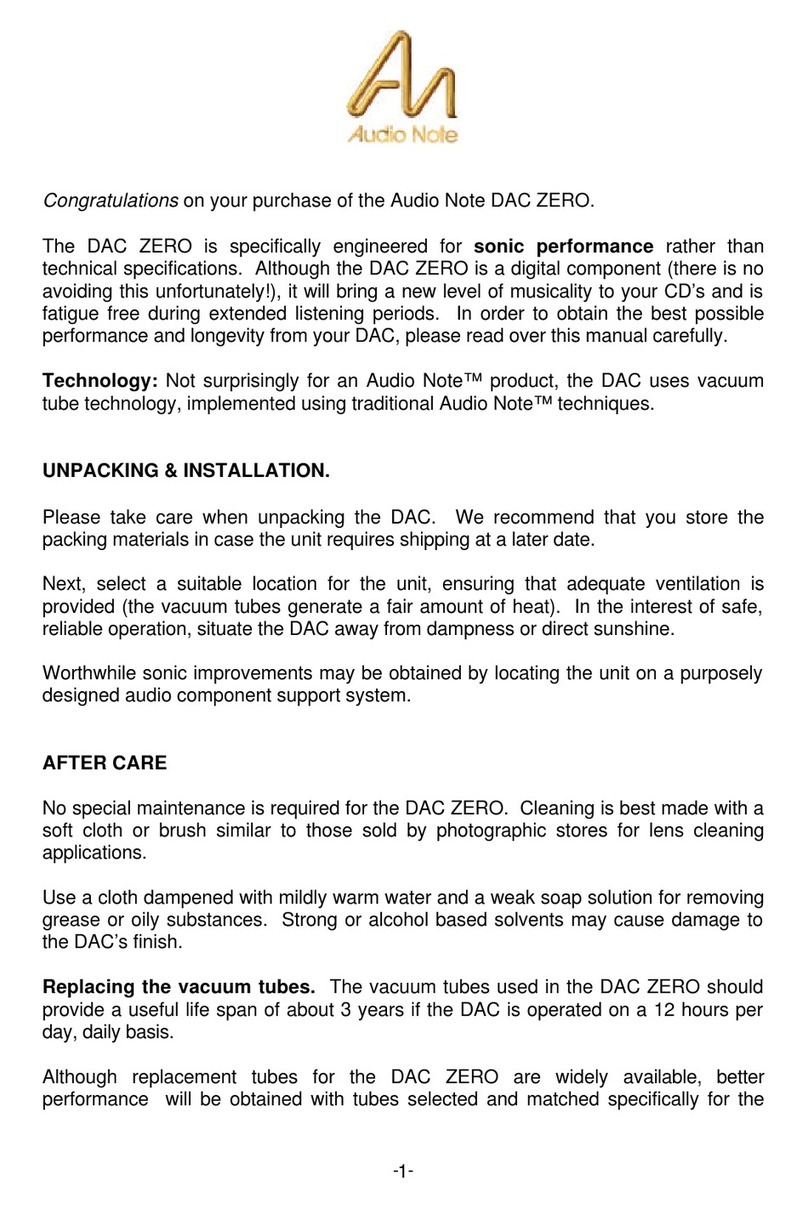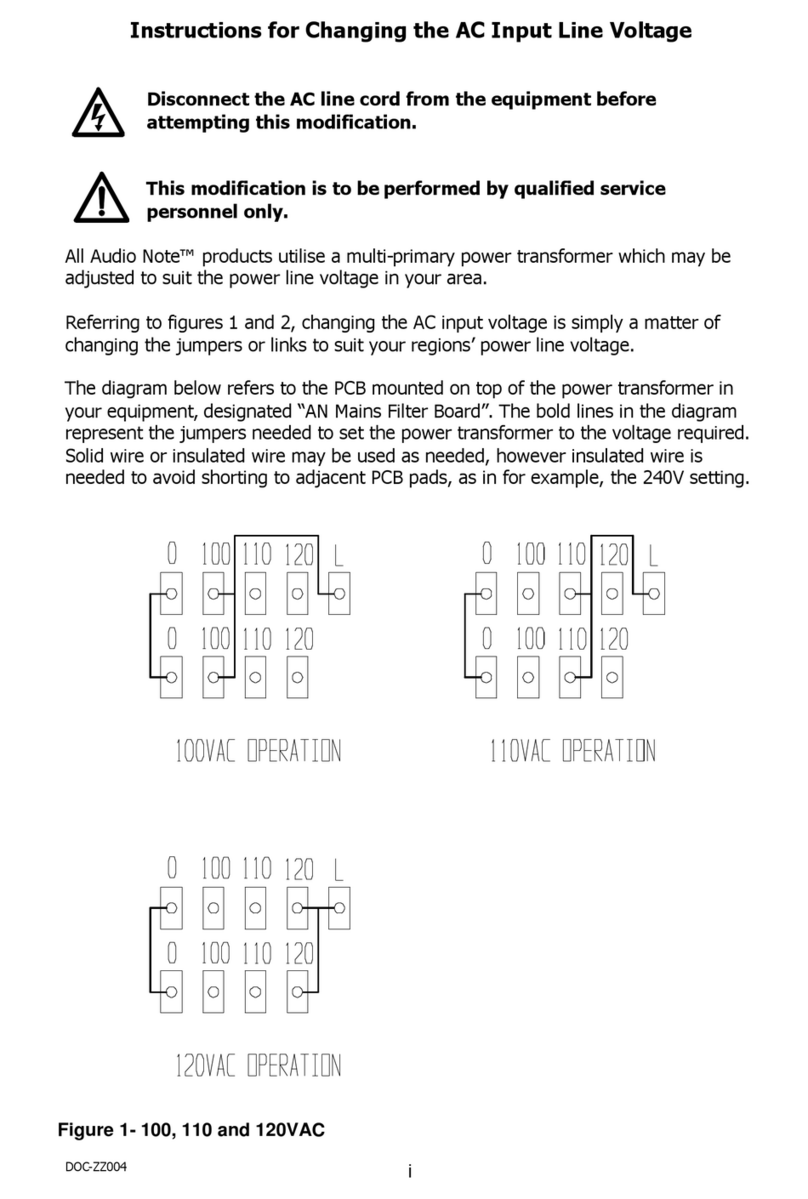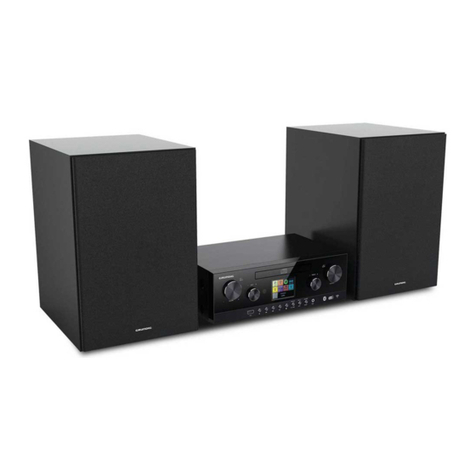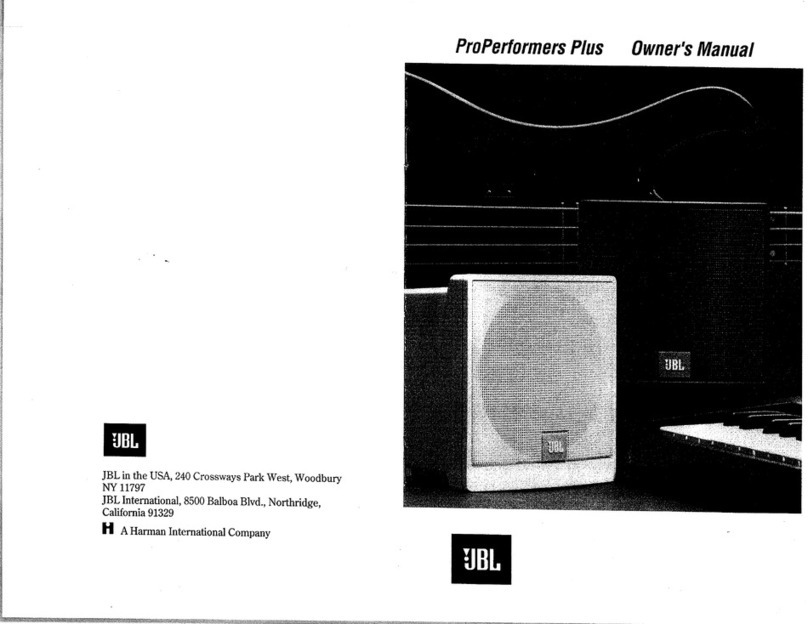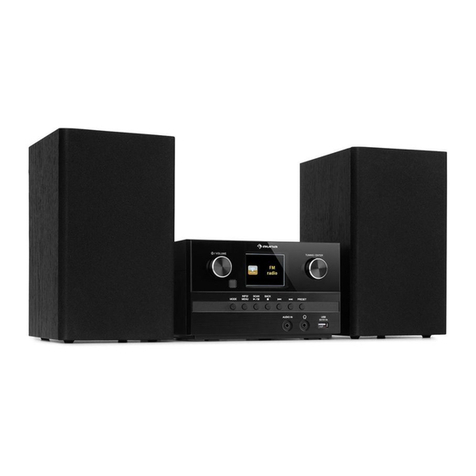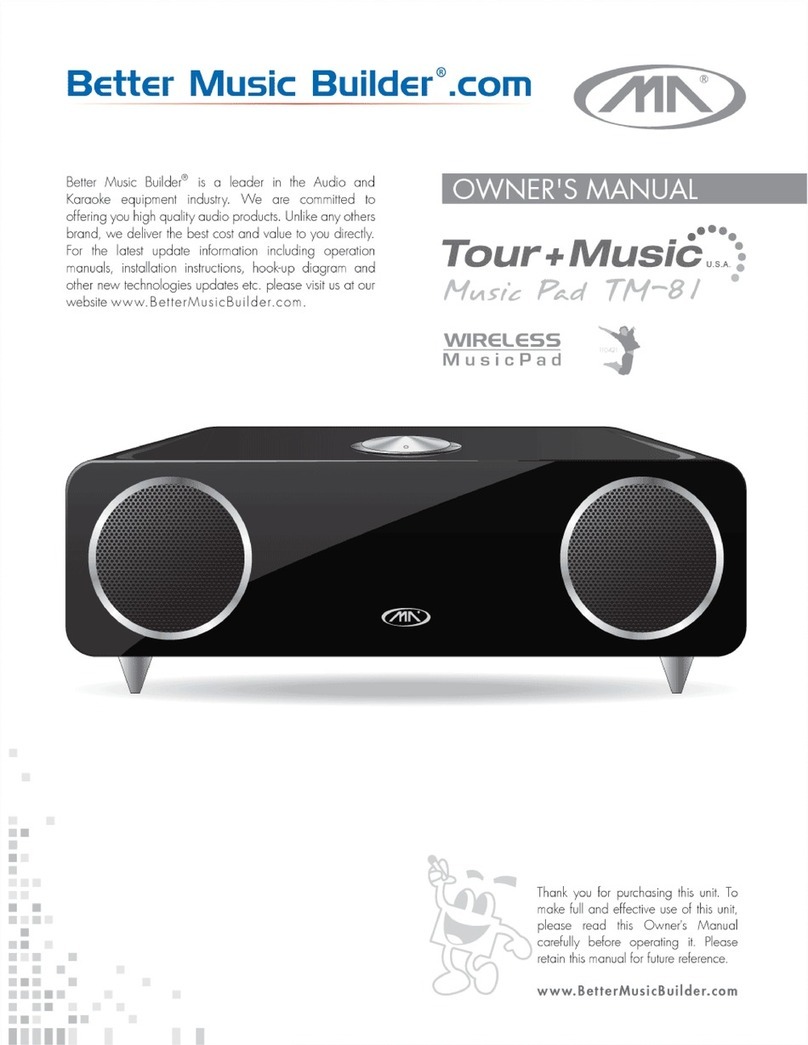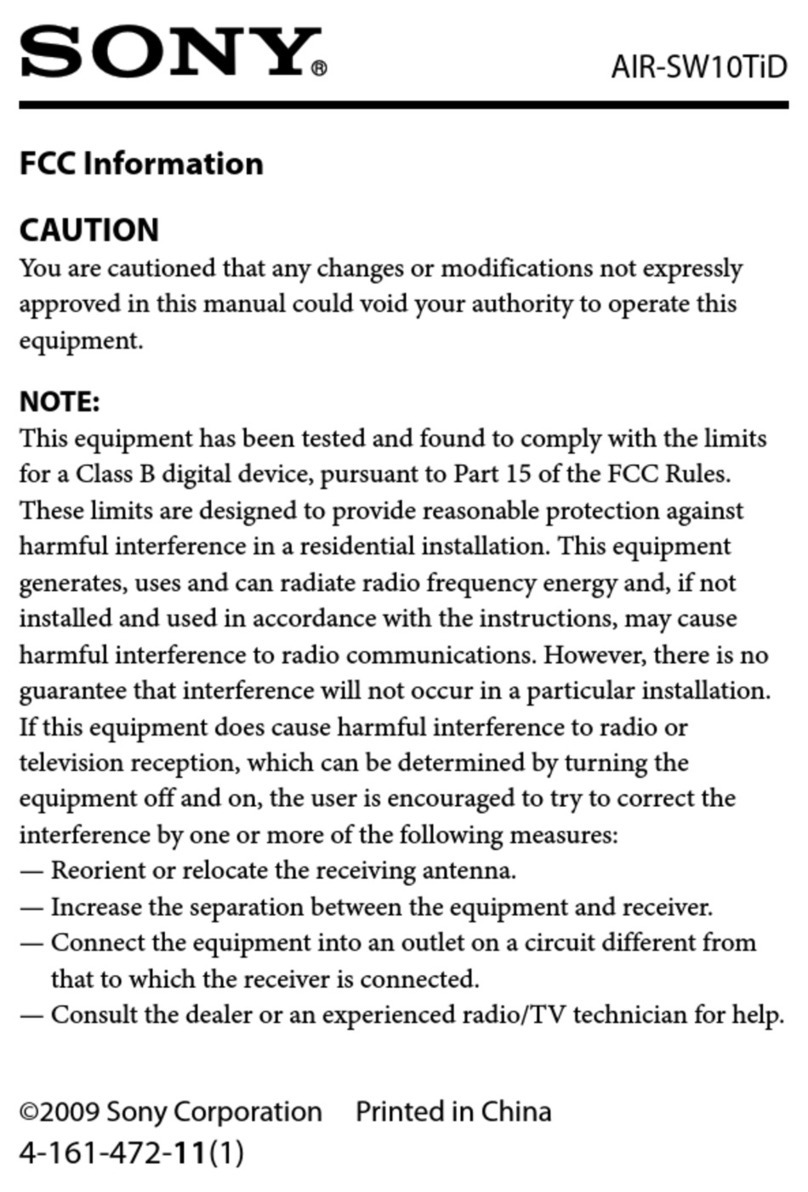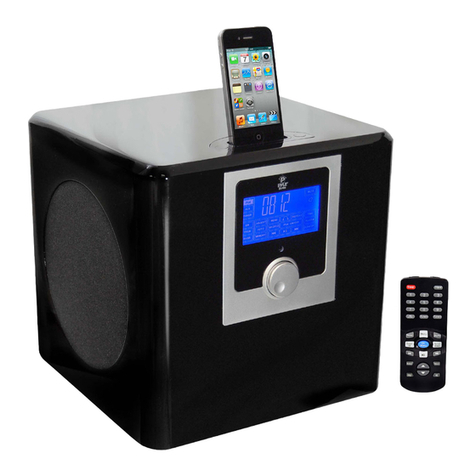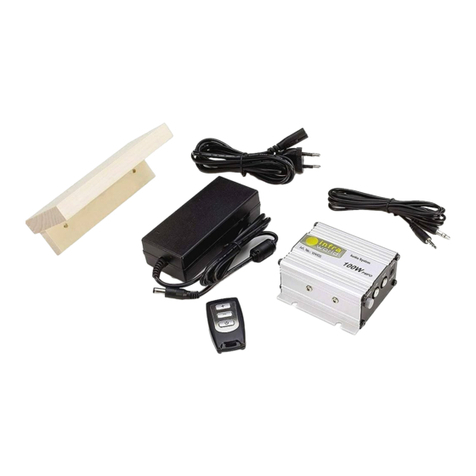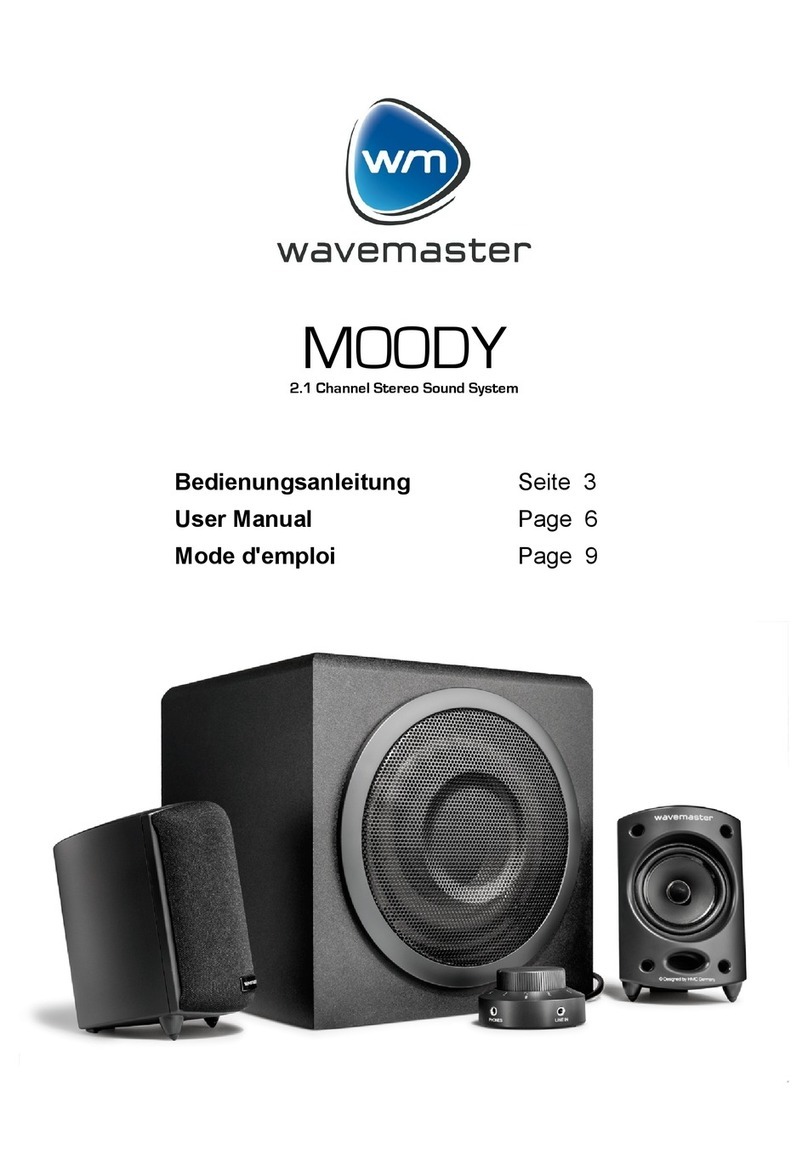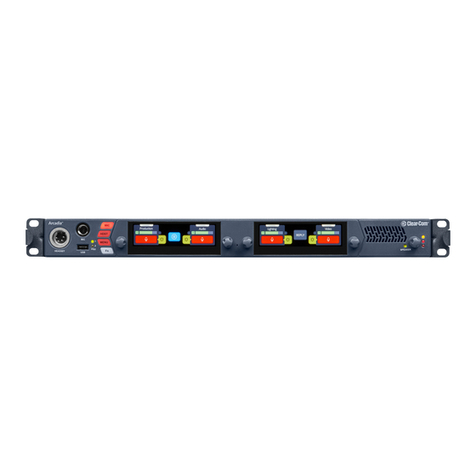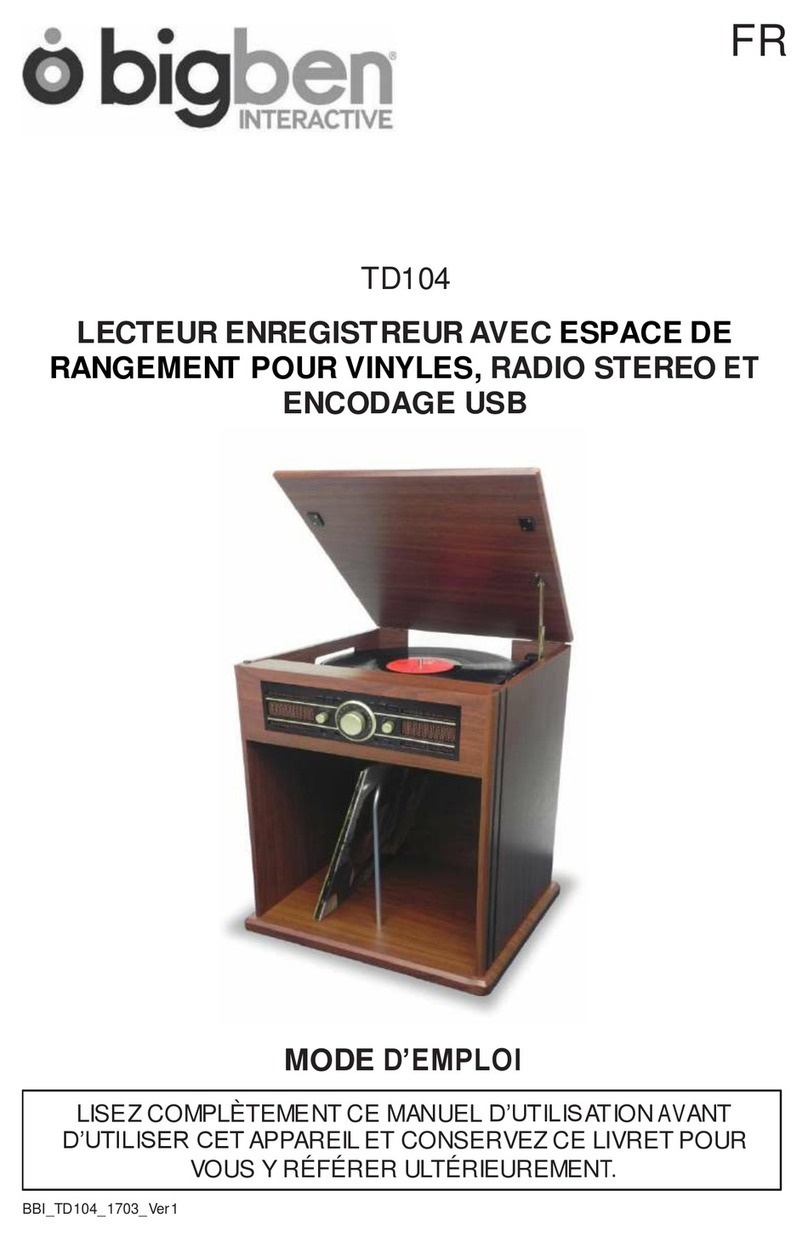Audio Note DAC2 User manual

- -
1
Congratulations on your purchase of the Audio Note™ DAC2.
The DAC2 was specifically designed and engineered for the best sonic
performance rather than technical specifications. Although the DAC2 is a digital
component (there is no avoiding this unfortunately!), it will bring a new level of
musicality to your CD’s and is fatigue free during extended listening periods. In
order to obtain the best possible performance and longevity from your DAC, please
read over this manual carefully.
Technology
Not surprisingly for an Audio Note™ product, the DAC uses vacuum tube technology
implemented using traditional Audio Note™ techniques with simple signal paths
incorporating no correction or feedback operating the valves at their most linear
operating points for best sound and longevity.
Unlike its smaller brother the DAC1, the DAC2 uses the patented analogue
transformer coupled filter interface (US patent no. 5420585, UK patent no. 2270595,
Australian patent no. 670611), which substantially improves the conversion from
digital to analogue replay. Also Audio Note copper wired Mumetal core Interface
transformer and Audio Note AN-C Copper wiring.
UNPACKING & INSTALLATION.
Please take care when unpacking the DAC. We recommend that you store the
packing materials in case the unit requires shipping at a later date.
Next, select a suitable location for the unit, ensuring that adequate ventilation is
provided (the vacuum tubes do generate some amount of heat). In the interest of
safe, reliable operation, situate the DAC away from dampness or direct sunshine.
Worthwhile sonic improvements may be obtained by locating the unit on a suitably
designed audio component support system.

- -
2
AFTER CARE
No special maintenance is required for the DAC2. Cleaning is best made with a soft
cloth or brush similar to those sold by photographic stores for lens cleaning
applications.
Use a cloth dampened with mildly warm water and a weak soap solution for
removing grease or oily substances. Strong or alcohol based solvents may cause
damage to the DAC’s finish.
Replacing the vacuum tubes. The valves used in the DAC2 is a common double
triode type 6DJ8/ECC88, which should provide a useful life span of about 5 years if
the DAC is operated 24 hours per day, which is the recommended operation and the
one that sounds the best. There are many equivalents to the ECC88/6DJ8, if you
want to experiment with different types, see my comments on this in a section later in
this manual.
Although replacement tubes for the DAC2 are fairly widely available, better
performance will be obtained with tubes selected and matched specifically for the
DAC by Audio Note™. Should the vacuum tubes require replacement, please
contact your Audio Note™ dealer for technical support.
UPGRADING
One of the biggest problems with Digital Audio is the short lifecycle of all but a few
products, which is why we have made the DAC 2 upgradeable to DAC 2 Signature,
DAC 3 and DAC 3 Signature. This way your basic investment is not devalued but
remains secure for years to come.
CONNECTIONS - Digital
A coaxial connection enables connection of the DAC to a CD transport or other
digital sources.
Before making a connection, ensure that the DAC and Transport is turned off.
Select a suitable coaxial cable for digital use, we recommend Audio Note™ AN-A,
AN-C copper interconnects or AN-S, AN-V, AN-VX and AN-VZ silver interconnects,
in a 75cm* run with Audio Note™ AN-GP RCA plugs. Coaxial cables for digital use
are most commonly terminated with RCA connectors and so the DAC uses RCA
type input sockets.
Plug one end of the coaxial cable into the RCA socket on the DAC (marked Digital
Input) and connect the other end of the coaxial cable to your CD transport (marked
Digital Output).
Your dealer can advise on suitable type and quality of cable and give you a
recommendation as to which Audio Note™ cable is the best choice. (The best
recommendation is Audio Note™ silver cable).
*Some special notes about digital cables - Try to use a digital cable of less than 1.5
metre in length. Ideal length is in our opinion 0.75metre.

- -
3
CONNECTIONS - Analogue
Two sets of analogue outputs are provided for connection to your amplifier. Be sure
to set the amplifier’s volume to off before making the connection.
The De-emphasis process is now carried automatically within the DAC itself. We
recommend that the connections for right and left should only be made to the
sockets on the rear panel marked DIRECT for BEST RESULTS.
De-emphasis means that the CD has been encoded with a treble increase which the
`De-emp` circuit in the converter will correct. The BEST connection for most CD`s,
for sound quality, should be via the Direct Out.
CONNECTION – MAINS : The DAC has an IEC mains inlet socket, use the supplied
mains cable to connect the unit to the local mains supply, the fuse is situated in the
inlet socket as well.
OPERATING THE DAC2.
Once all the connections are complete, turn on the CD transport. Next turn on the
DAC by using the rocker switch located on the back panel next to mains inlet socket.
Now turn on the amplifier. Red led on front panel confirms unit is on.
If all is in order, the system is now ready to play music, and at last the sound of your
compact discs will be tolerable!
The DAC2 will improve over time and start to sound really well balanced. This is
because of the “bedding in” time taken by new electrical components inside the unit.
Also, the DAC’s sound quality improves as the unit reaches its normal, stable
operating temperature.
Only a rear panel on/off switch is provided as the unit is designed for continuous
operation. The DAC need not be switched off each time after use. It is interesting to
note that continuous operation not only results in optimum sonic performance (since
the unit is maintaining a constant operating temperature) but also causes less
electrical stress and so extends component and valve life.
EXPERIMENTING WITH DIFFERENT VALVES.
As mentioned before the 6DJ8/ECC88 have a number of equivalents and were made
by a large number of manufacturers, they are now only made in Russia and
Yugoslavia.
Equivalents include,
7308, E88CC, 6922, E188CC, CV2493 (E88CC), CV5358 (ECC88), CV 4110 (very
low noise E188CC version), CV4108, CV4109, CV4111 (all E188CC).
These were made by Sylvania, PhilipsECG, Mullard, Philips (Holland), Siemens,
Telefunken and many others.
The best I have found are the Telefunken E88CC 01 gold pin, expensive, but worth
every penny.
WARRANTY AND SERVICING

- -
4
Audio Note™ warrants this product free from defects in materials and workmanship
for one year from original date of purchase from an appointed Audio Note™ dealer.
The vacuum tubes are warranted for three months.
In the event that your Audio Note™ product requires servicing, please contact your
Audio Note™ dealer. If the component needs to be shipped, please use the original
packaging materials and include a copy of the sales purchase with a note,
explaining, in as much detail as possible, the problems that you are experiencing
with the unit.
Any modification not authorised by Audio Note will invalidate this warranty.
If you require technical support, new vacuum tubes or have any questions, please
direct them to your local Audio Note™ dealer or alternatively to:-
Customer Support
Audio Note (UK) Limited,
Unit C, Peacock Industrial Estate,
Lyon Close,
125-127 Davigdor Road,
HOVE,
East Sussex , BN3 1SG
United Kingdom.
Tel: +44 (0)1273 220511
Fax: +44 (0)1273 731498
Email: [email protected]
SPECIFICATIONS
Weight 8 kilograms
Dimensions 145(h) x 300 (w) x 415 (d) (mm)
Fuse ratings 800mA anti-surge (110/120v supply)
500mA anti-surge (220/240V supply)
Output impedance Less than 2K ohm
Reference output 3.0V RMS (approx.)
Channel balance Less than 0.25db
Tube compliment 2 x 6DJ8 Philips ECG Output Stage
Digital system 18 Bit 44.1/48/96KHz compatible multi Bit
converter chip
Power consumption 20 Watts
Note: Due to Audio Note’s ongoing research and development programme, specifications are subject to
change without notice. July `01.
THIS PRODUCT COMPLIES WITH CE STANDARDS.
Table of contents
Other Audio Note Stereo System manuals
